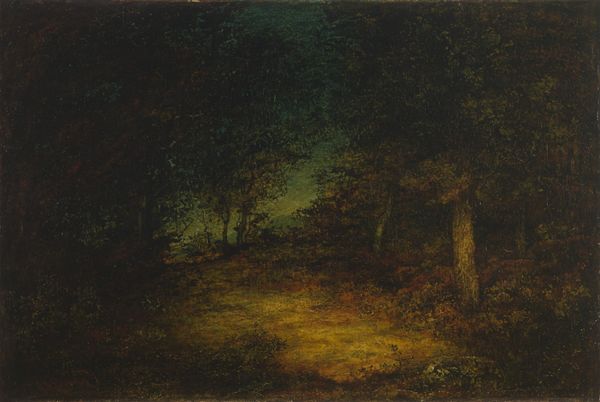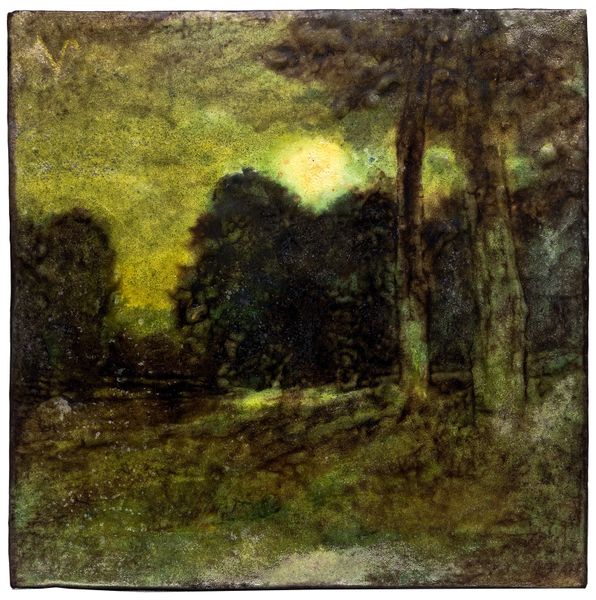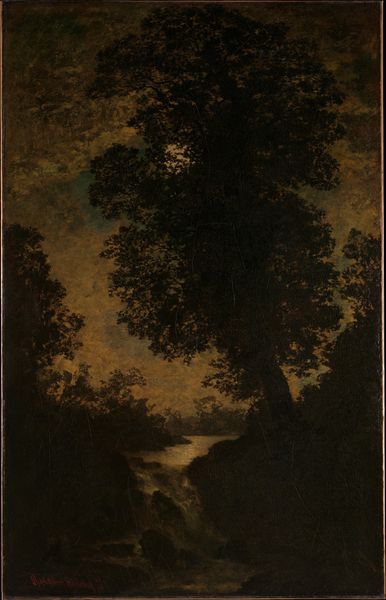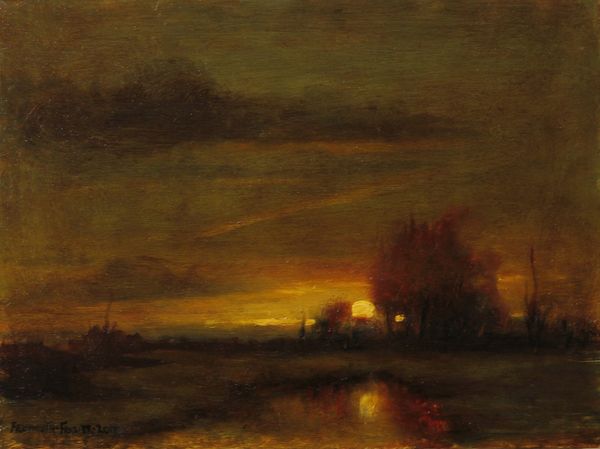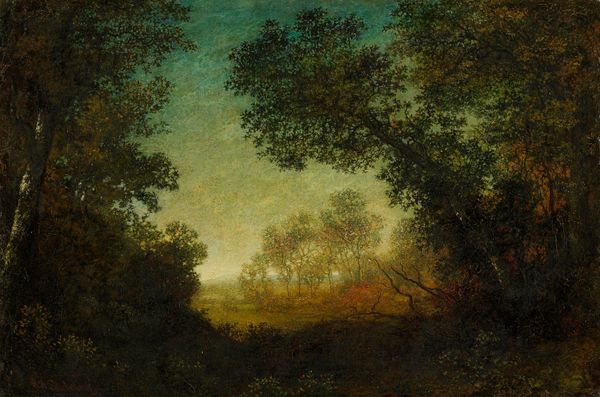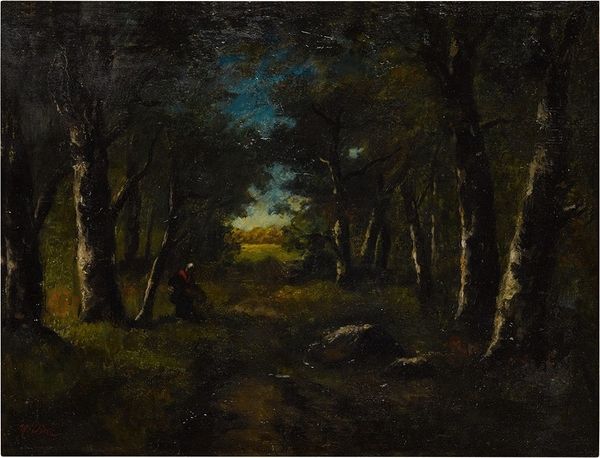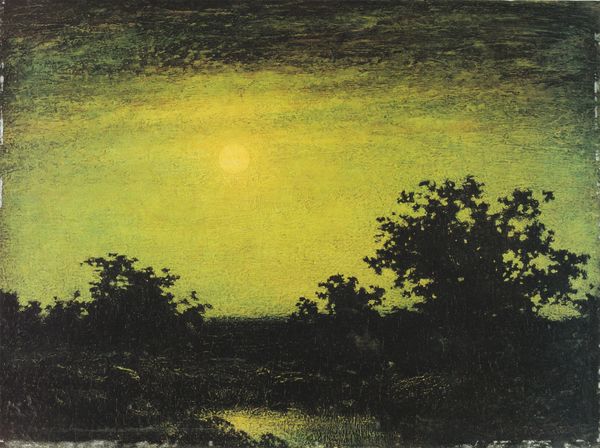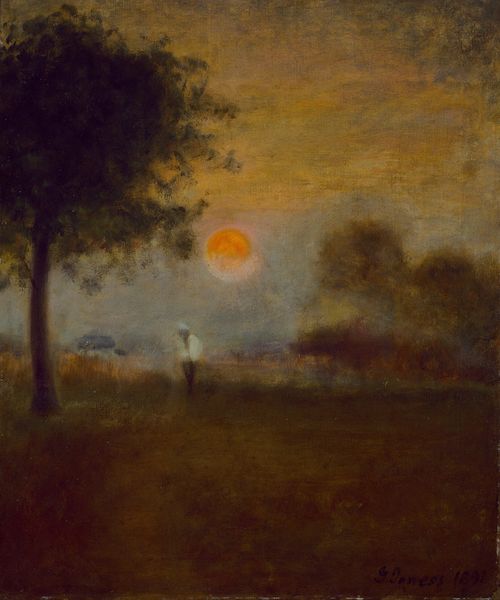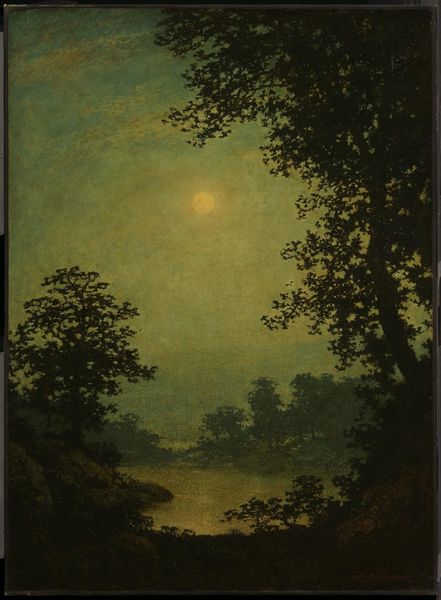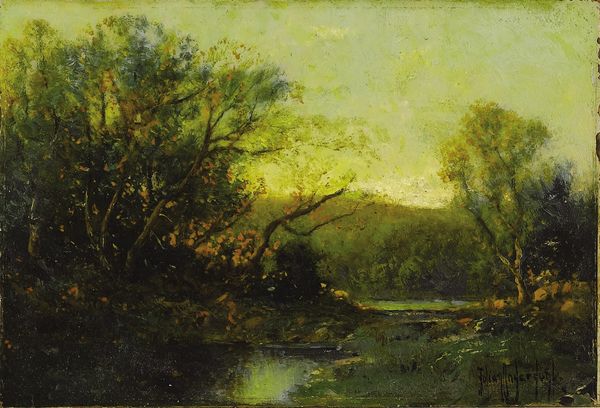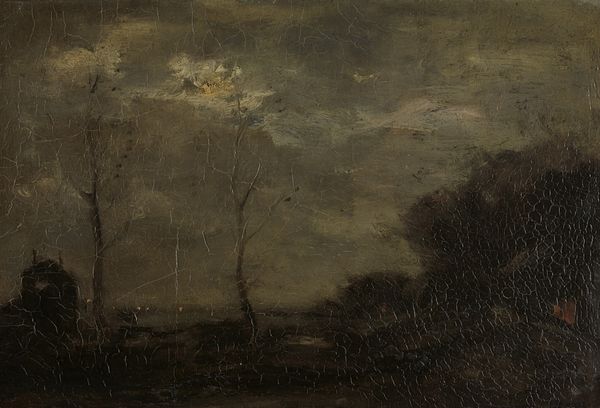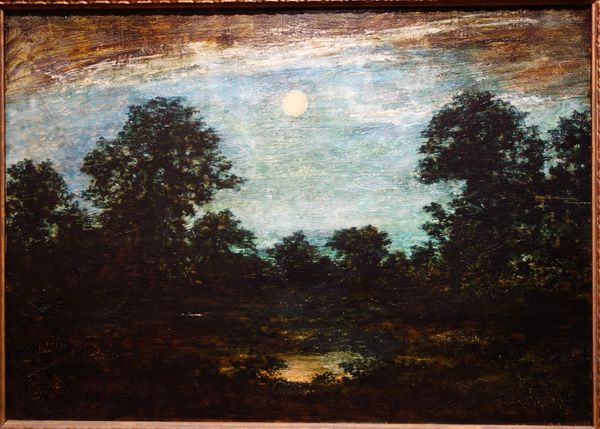
painting, plein-air, oil-paint
#
painting
#
plein-air
#
oil-paint
#
landscape
#
romanticism
Copyright: Public domain
Editor: This is Ralph Blakelock's "Moonlight," painted with oils in a plein-air style. There isn’t a precise date available for it. I’m immediately drawn to its almost unsettling stillness and the contrast between the dark trees and that ethereal glow of the moon. What strikes you about it? Curator: That's a great initial reaction. Considering the Romanticism movement, which really valorized individualism and emotion, I wonder how Blakelock used the moon, a traditionally feminine symbol, within the context of landscape art, which was primarily a male domain. The glow isn't necessarily comforting, is it? How does that tension affect our viewing experience, especially knowing it was painted *en plein air*? Editor: I think it does make it unsettling. It isn't a calming moonlight; it feels almost… invasive, unsettling the tranquility. Was this subversion intentional, do you think? Curator: Well, Blakelock was working in a time when both race and class deeply affected perceptions of value and beauty. Think of the Hudson River School and its romanticized, colonialist view of nature. How might Blakelock be intentionally contrasting this mainstream ideal, even subtly critiquing it with this darker, more ambiguous take? Is there a sense of indigeneity or an assertion of difference here that pushes against that dominant narrative? Editor: That makes sense. It’s like the painting hints at the complexities of the land beyond simple visual pleasure. Are you suggesting that Blakelock, through his approach to landscape, creates a counter-narrative? Curator: Exactly. By disrupting established codes of landscape, through this distinctive and almost melancholic visual language, the piece really makes us question power relations in 19th-century landscape painting and its ties to broader colonial narratives. Editor: I hadn’t thought about it that way, seeing it as part of a bigger conversation about land and representation. Thank you! Curator: It’s just a matter of viewing it through multiple lenses. Thanks for the insightful questions.
Comments
No comments
Be the first to comment and join the conversation on the ultimate creative platform.
